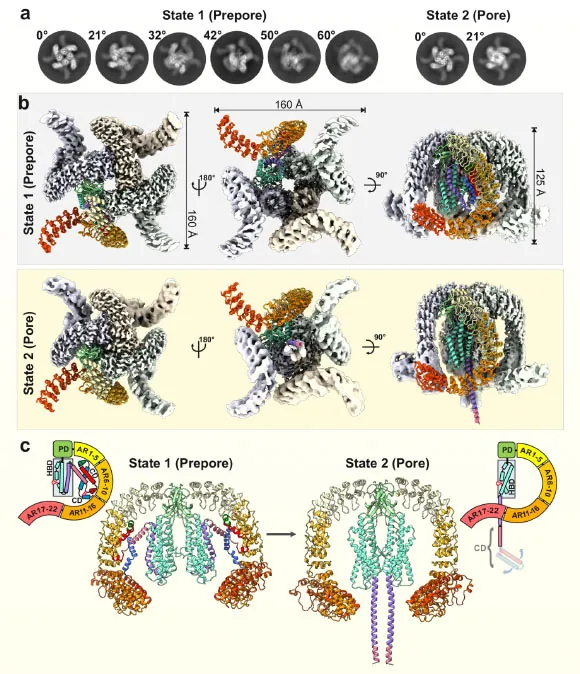
Scientists Unlock Secrets of Deadly Black Widow Spider Venom: A Potential Goldmine for Medicine
2024-10-08
Author: Sarah
Introduction
In a breakthrough study, chemists from the University of Münster have meticulously decoded the structure of the notorious α-latrotoxin, a venom component unique to black widow spiders that poses a significant threat to vertebrates, including humans. This remarkable research reveals the molecular intricacies of this potent toxin and its mechanism of action at near-atomic resolution.
Composition of Black Widow Venom
Black widow spiders, part of the genus Latrodectus, harbor a complex venom composed of various toxins, including seven distinct latrotoxins. Among these, α-latrotoxin is particularly noteworthy as it specifically targets vertebrate organisms. The venom also includes five insect-specific variants — α, β, γ, δ, and ε-latroinsectotoxins — along with a toxin that is lethal to crustaceans.
Mechanism of Action
α-Latrotoxin is notorious for disruptively engaging the nervous system. As highlighted by researcher Björn Klink, once α-latrotoxin binds to specific synaptic receptors, it unleashes a formidable cascade: calcium ions flood into the presynaptic membranes of nerve cells, leading to rampant release of neurotransmitters that induce agonizing muscle contractions and spasms.
Complex Mechanism and Novel Features
What makes this discovery even more intriguing is the complex mechanism underpinning this seemingly simple process. Utilizing cutting-edge technologies such as high-performance cryo-electron microscopy (cryo-EM) and advanced molecular dynamics (MD) simulations, the researchers unveiled how α-latrotoxin transforms upon receptor binding. A unique feature of this toxic molecule is its ability to create a 'stalk' that penetrates the cell membrane akin to a syringe. This stalk forms a minute pore in the membrane that serves as a gateway for calcium ions.
Implications and Future Research
The MD simulations illuminated how calcium ions can enter the cell through a selectively designed gate situated directly above the pore. Christos Gatsogiannis, another researcher involved, emphasized that α-latrotoxin remarkably mimics the function of natural calcium channels found in presynaptic membranes, distinguishing it fundamentally from all other known toxins.
The implications of this groundbreaking study, published in Nature Communications, are profound. The researchers anticipate that the insights gleaned from this research could lead to innovative applications in biomedicine, including the development of novel antidotes, targeted treatments for paralysis, and even environmentally-friendly biopesticides.
These promising advancements not only highlight the potential of black widow spider venom in the realm of biotechnology but also pave the way for future research endeavors that could harness these natural toxins for therapeutic benefits. As scientists continue to explore the depths of these venom compounds, the possibilities they unlock could revolutionize medicine as we know it.
Conclusion
Stay tuned as more revelations unfold in the realm of venomics!



 Brasil (PT)
Brasil (PT)
 Canada (EN)
Canada (EN)
 Chile (ES)
Chile (ES)
 España (ES)
España (ES)
 France (FR)
France (FR)
 Hong Kong (EN)
Hong Kong (EN)
 Italia (IT)
Italia (IT)
 日本 (JA)
日本 (JA)
 Magyarország (HU)
Magyarország (HU)
 Norge (NO)
Norge (NO)
 Polska (PL)
Polska (PL)
 Schweiz (DE)
Schweiz (DE)
 Singapore (EN)
Singapore (EN)
 Sverige (SV)
Sverige (SV)
 Suomi (FI)
Suomi (FI)
 Türkiye (TR)
Türkiye (TR)